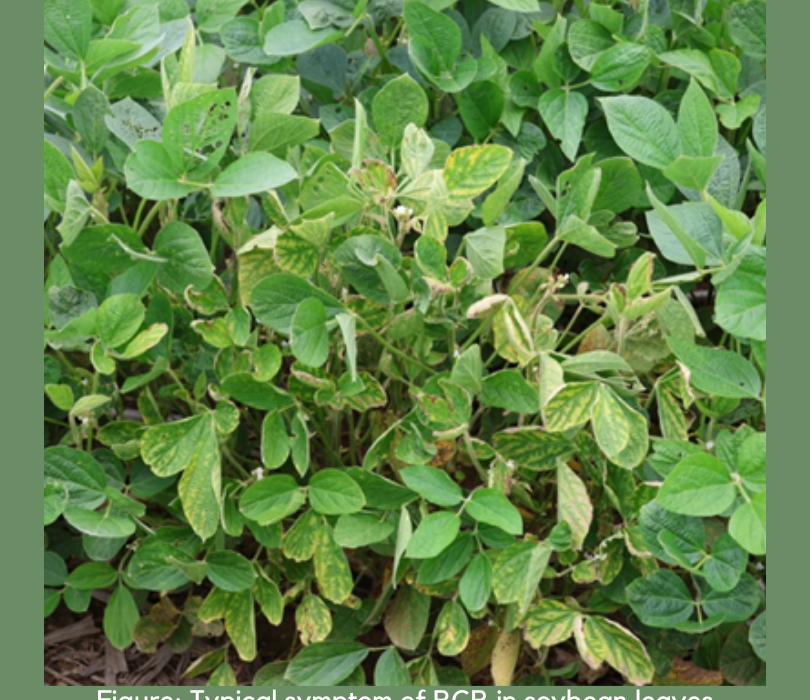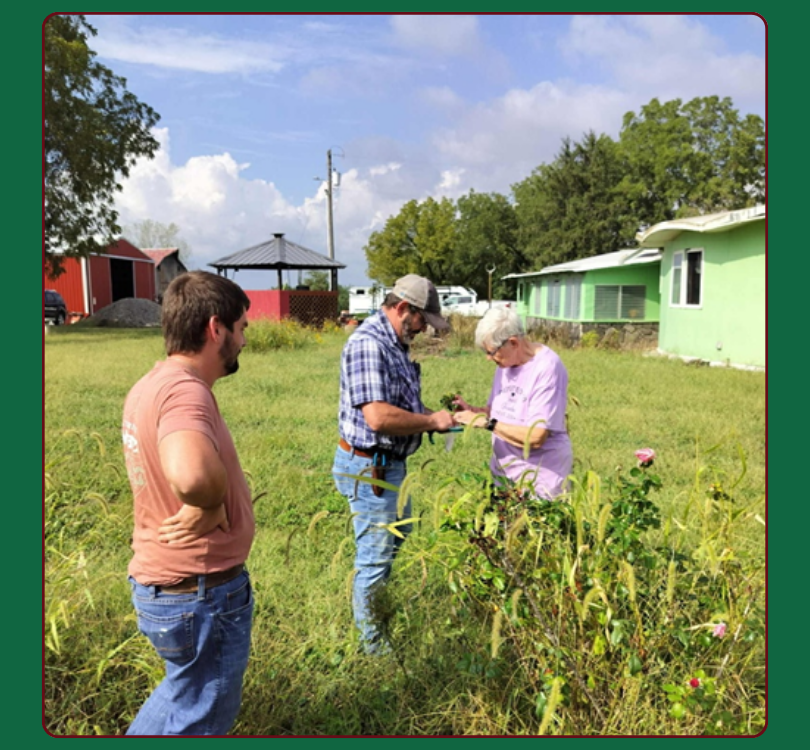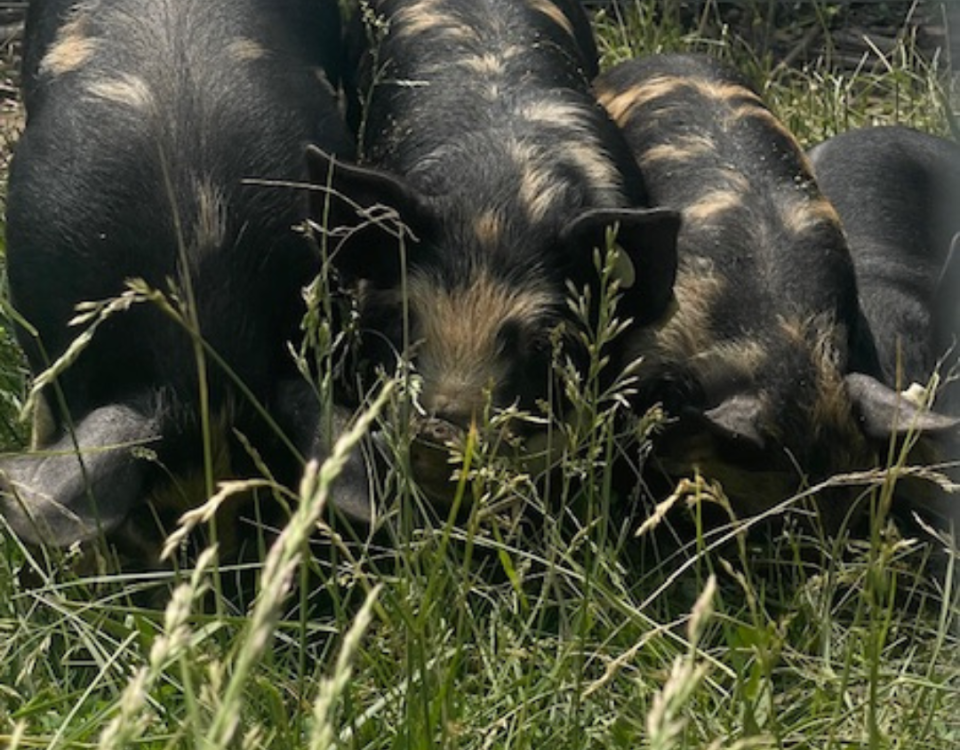
Soil Fertility with Neal Kinsey
September 18, 2025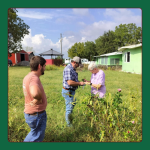
TOPP Mentor-Mentee Success Story: Building Organic Futures Through Connection & Collaboration
October 28, 2025In July 2024, a serious soybean disease made its presence known in Missouri: Red Crown Rot (RCR), caused by the soilborne fungus Calonectria ilicicola. Observed in Marion and Audrain County fields with typical corn-soybean rotations, this disease has important implications for soybean growers across the state.
What Is Red Crown Rot?
Red Crown Rot is a fungal disease primarily affecting soybean roots, lower stems and leaves. It causes:
- Interveinal chlorosis (yellowing between leaf veins) and interveinal necrosis (browning between leaf veins)
- Premature leaf senescence
- Reddish discoloration at the stem base and roots
- Reddish-orange fungal structures (perithecia) on the lower stem and roots
Symptoms can resemble Sudden Death Syndrome, Southern Stem Canker and Brown Stem Rot but Red Crown Rot is a distinct disease that requires separate management. Similar to Sudden Death Syndrome (SDS), Red Crown Rot infects plants early in the season, but symptoms typically do not appear until later stages – around R2 or later.
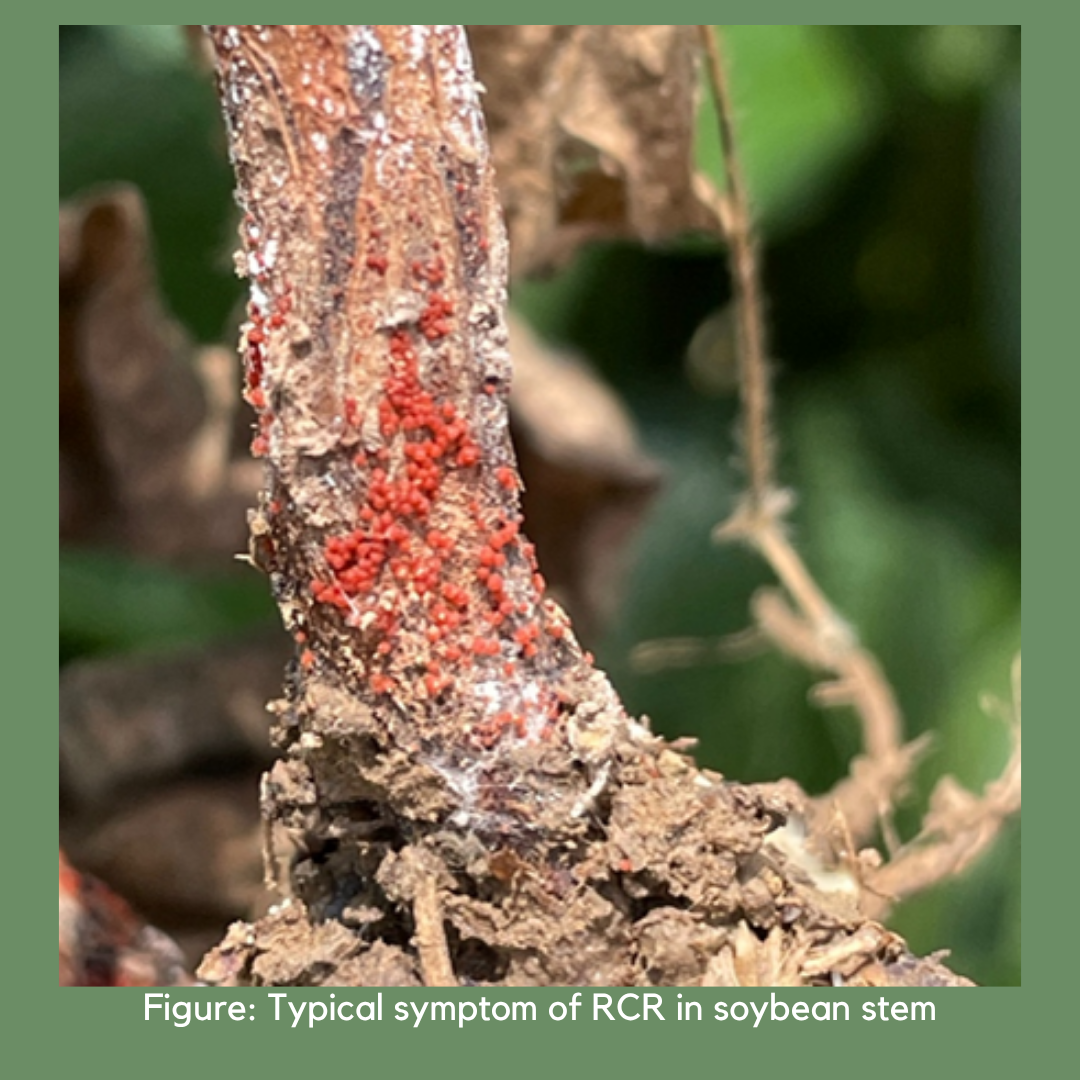
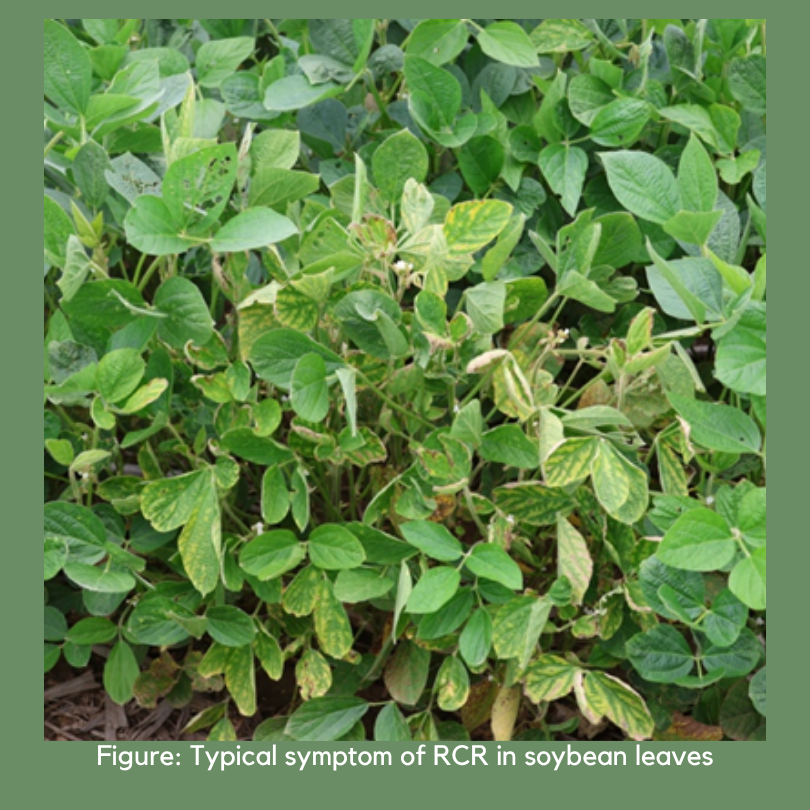

Photos Provided By Dr. Mandy Bish
How Was It Confirmed in Missouri?
Researchers collected symptomatic soybean plants in Marion County during the R3 growth stage (early pod development). The plants were carefully examined, and the fungus was isolated and cultured. Advanced genetic sequencing from the DNA cultures confirmed the fungus: Calonectria ilicicola, showing 100% DNA identity with known sequences.
To confirm pathogenicity, Koch’s postulates were completed in a controlled experiment—plants inoculated with the fungus developed characteristic symptoms, and the fungus was successfully reisolated.
Why It Matters for Missouri
Though C. ilicicola has been known in the U.S. since 1965 (first found on peanuts), its recent emergence in commercial soybean fields in Missouri is concerning. With approximately 5.9 million acres of soybean and around 24,000 acres of peanuts grown in the state, the potential for crop loss is significant.
Red Crown Rot thrives in:
- Warm, wet soils
- Fields with history of susceptible crops like soybean, peanut, and cotton
- Reduced tillage systems, where infected plant debris remains
Prevention and Management Strategies
There’s no silver bullet for RCR, but integrated management can reduce the risk:
Crop Rotation
Avoid continuous soybean or soybean-peanut rotations. Introduce non-host crops like wheat, sorghum, or corn (though even corn can sometimes host the pathogen in the roots).
Improve Drainage
ilicicola favors wet, saturated soils. Improve drainage through field grading, tile drainage, or raised beds where possible.
Tillage Management
While no-till has many benefits, it may contribute to disease carryover. In high-risk fields, consider light tillage to bury infected residue. Be mindful to clean tillage equipment when leaving an infested field. Once the disease is introduced to a field, it cannot be irradicated.
Resistant Varieties
As of now, no soybean cultivars are fully resistant to RCR, but some may show partial tolerance. Consult your seed provider for updates.
Monitor Closely
If you observe symptoms in the field—especially reddish stems and leaf yellowing—collect samples and consult with local extension agents or plant diagnostic labs.
Looking Ahead
As research continues, we need to:
- Map the spread of the disease across Missouri and nearby states
- Screen for resistance in current and experimental soybean varieties
- Develop new fungicide strategies or seed treatments (none are currently labeled specifically for RCR)
Final Thoughts
Red Crown Rot is a serious emerging threat to soybean in Missouri. While it’s still relatively rare (about 5% field incidence in the 2024 report), its potential to spread rapidly means that early detection and proactive management are critical.
Farmers, consultants, and researchers must stay vigilant, share field observations, and work together to manage this new challenge in Missouri agriculture.
Acknowledgement
The Missouri Organic Association extends its sincere appreciation to Dr. Mandy Bish, Assistant Professor and State Extension Plant Pathologist in the Division of Plant Science and Technology at the University of Missouri, Columbia. Dr. Bish and her research team have played a critical role in identifying emerging pathogens affecting Missouri’s corn and soybean systems. This article draws upon findings published in their recent work, “Bish et al. 2025; First Report of Red Crown Rot of Soybean, Caused by Calonectria ilicicola, in Missouri: Plant Disease”.


